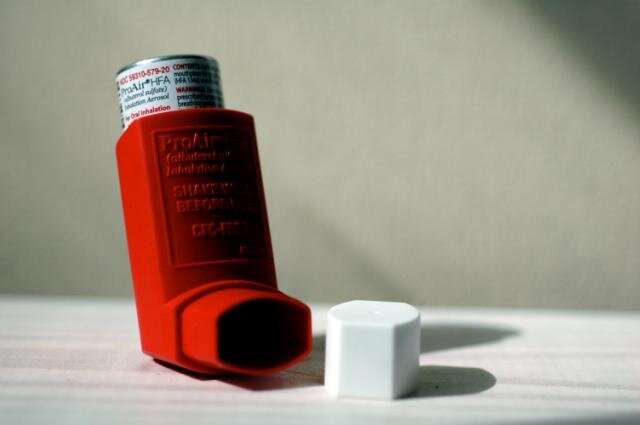
Frequent GP visits improve health outcomes for children with asthma; however, they are often irregular and inconsistent leading to an increase in hospital readmissions, new research has found.
Two studies, led by Murdoch Children’s Research Institute, have highlighted the gaps and opportunities across the primary care network in childhood asthma care to ensure services remain accessible in the wake of GP shortages and a decline in bulk billing services.
Published in the Journal of Asthma and Archives of Diseases in Childhood, the research involved 277 GPs and 767 caregivers of children aged 3-18 years who were admitted to one of three hospitals in Victoria with asthma.
It found only one in five participants visited their regular GP on more than 60 percent of visits and 36 percent saw a GP within seven days of being discharged from hospital for their asthma. Early follow-up and frequent GP visits were associated with reduced ED presentations, hospital readmissions and improved asthma outcomes.
Murdoch Children’s researcher Renee Jones said the study showed children with asthma were receiving fragmented treatment in the primary care network.
“Families often reported being unable to access primary care before presenting to a hospital for their child’s asthma, highlighting a potential missed opportunity for avoiding an admission and for continuity of treatment,” she said. “On top of this, families noted there were unclear pathways to follow-up care, with a lack of coordination between hospitals and their local doctor.”
Jones said the low rate of GP follow-up was worrisome given pediatric asthma care guidelines recommended a review after a hospital admission or ED presentation as well as ongoing regular checks-ins.
The research stated only 39.2 percent of GPs knew their patient had been readmitted to hospital for asthma, highlighting the need for hospitals to improve their communication. Additionally, only 12 percent of GPs were confident managing children with poorly controlled asthma, indicating a need to provide easy access to specialist advice for more severe cases.
Hospital readmission rates in Victoria have increased from one in three children within 12 months compared with one in four a decade ago. Asthma is a leading cause of chronic illness and unplanned hospital admissions for children. The prevalence of childhood asthma is increasing globally, causing strain on health systems and negatively affecting quality of life.
Rachel Cornwell said her son Ollie, 3, had been admitted to the emergency department 48 times to treat his severe asthma.
She said the 45-minute trip into the hospital could be avoided if Ollie had a regular GP who was well equipped to handle complex asthma cases.
Ollie currently has injections and takes steroid medication, on top of his inhaler, to help decrease the number of asthma flare-ups.
“Ollie doesn’t see a GP for his asthma because it’s an uphill battle to get an appointment and consistent care,” she said. “He goes from 100 to zero in a flash. Day two of an asthma flare-up he would need to have IV treatment or oxygen in hospital. It is incredibly stressful to see your child struggling to breathe.”
“There was a point where we were going into the hospital fortnightly and Ollie wasn’t receiving follow up care. GPs just aren’t confident to treat Ollie because of his history.”
“You can’t predict when your child is going to have an asthma attack, so you don’t have the luxury of booking an appointment in advance. It’s just easier and quicker to go to hospital.”
But Rachel said things had improved with Ollie since coming under the care of the Complex Asthma Service at The Royal Children’s Hospital.
She said the recent research by Murdoch Children’s provided her family with hope.
“The research could lead to much better care for children with severe asthma,” she said. “If we could see a regular GP who had the expertise to treat Ollie it would be a huge weight off our shoulders.”
Murdoch Children’s Dr. Katherine Chen said there were opportunities to improve asthma care across the whole system including strengthening education around the importance of regular, proactive primary care visits, increasing access to GPs, addressing gaps in guideline practices for pediatric asthma management and improving communication between hospitals and GPs.
“The findings highlight the importance of improving accessibility, consistency in care and streamlining communications,” she said. “Each hospital admission should prompt a holistic evaluation of the child’s asthma management to prevent future readmissions. Making these improvements will require ongoing infrastructure and workforce planning, funding and better education.”
Dr. Chen acknowledged Australia was facing a shortage of GPs and an increase in the likelihood of clinical practices charging for pediatric appointments to cover rising costs.
“This raises concerns about equity of access to primary care as some families may not be able to receive regular care or obtain an appointment during an asthma attack due to cost or GP shortages in some regions,” she said. “New models of care and funding potentially involving nurses and pharmacists to complement primary care could be considered to help improve the system.”
More information:
Katherine YH Chen et al, Primary health care utilization and hospital readmission in children with asthma: a multi-site linked data cohort study, Journal of Asthma (2023). DOI: 10.1080/02770903.2022.2164200
Renee Jones et al, Exploring gaps and opportunities in primary care following an asthma hospital admission: a multisite mixed-methods study of three data sources, Archives of Disease in Childhood (2023). DOI: 10.1136/archdischild-2022-324114
Journal information:
Archives of Disease in Childhood
Source: Read Full Article
